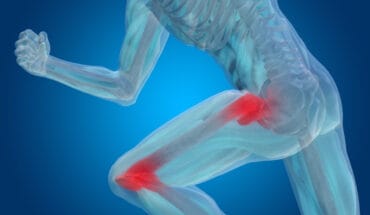An advance in survival of surgical patients is coming from a better understanding of vitamin D. Many doctors have been sceptical, but the benefits of vitamin D are now clearly evident, showing that sun-lovers and health enthusiasts have been ahead of professionals on this issue. Meanwhile dermatologists are hiding their faces in shame since they mistakenly told people to avoid the sun which is our primary source of vitamin D. Food cannot provide more than a small fraction of the vitamin D that we need for full health.
Infections are three times more likely following surgery in patients who have a gastric bypass when they also have low vitamin D (less than 70nmols/l, or, 30ng/l), according to doctors at Harvard Medical School who monitored 770 gastric bypass operations between 2007 and 20111. Another study of 135 patients in intensive care2 in the university hospital in Porto Alegre, Brazil, has found that death is twice as likely for IC patients with a low level of vitamin D (less than 30nmols/l, or, 12ng/l) than for IC patients with higher levels. These observations could of course be explained by reverse causality operating so that infection causes a lowering of vitamin D levels rather than the other way round. However we now know a great deal about how vitamin D works in the body and this shows that 25-hydroxyvitamin D is a major stimulant to the immune system and has an important role in fighting infection.
Most people living in the UK have low levels of vitamin D that make hospital acquired infections more likely. In the UK we live far north and the sun is only high enough in the sky and strong enough to make vitamin D for less than half the year. Few of us these days have outdoor jobs and we spend more and more time indoors watching tv, roaming the internet and enjoying indoor life. The problem of low vitamin D levels begins with low levels in pregnancy. Breast milk generally contains very little vitamin D putting breast fed babies at special risk unless mothers take a supplement. Bottled baby milk is fortified with vitamin D but not at a very high level and so it is good for bottle fed babies to take a vitamin D supplement too.
There are other reasons why this generation gets less sun exposure than previous generations. Most small boys now wear long trousers and with heavy traffic children do not play so much outdoors. So vitamin D deficiency/insufficiency is a serious problem in northern Europe, particularly in the UK because of our cloudy climate, and worst of all in Scotland.
Vitamin D, is converted to its circulating form 25-hydroxyvitamin D3 (25(OH)D3) in the liver and then converted to its active metabolite, 1,25 hydroxyvitamin D3, (1,25(OH)2D3) also known as calcitriol, mainly in the kidneys. The endocrine action of calcitriol on bone mineral metabolism has been understood for decades. Vitamin D supplements have been advocated for rickets, osteoporosis and chronic bone pain and weakness for many years. Children with rickets are more susceptible to infections and vitamin D has been implicated in the pathogenesis of tuberculosis3.
High prevalence of vitamin D deficiency linked to mortality has been found in a retrospective study of 2,399 critically ill patients by Lee et al. However smaller studies have not always confirmed it. This conflict of evidence may be explained by differences in definition of D deficiency, different interventions and geographical location. A study of 1,325 patients in critical care by Dr AB Braun in Brigham and Women’s Hospital, Boston, found that 25-hydroxyvitamin D levels were predictive of short term and long term mortality4. The risk of death at 90 and 365 days following critical care initiation was about two times greater in patients with 25-hydroxyvitamin D deficiency (less than 15ng/l). Vitamin D has broad effects on immunity, inflammation, glucose and calcium metabolism, and endothelial and mucosal functions and so there are probably multiple reasons for an involvement of vitamin D in survival of critical care patients.
“Vitamin D deficiency is highly prevalent and has been associated with a diverse range of chronic medical conditions in the general population,” wrote Dr P Lee5,6, consultant endocrinologist in Princess Alexandra Hospital, Brisbane, Australia, in 2011. He went on:”In contrast, the prevalence, pathogenesis and significance of vitamin D deficiency have received little attention in acute medicine. Vitamin D deficiency is seldom considered and rarely corrected adequately, if at all, in critically ill patients.”
Lee further remarked on: “the previously under-recognized contribution of vitamin D deficiency to typical co-morbidities in critically ill patients, including sepsis, systemic inflammatory response syndrome and metabolic dysfunction. Improved understanding of vitamin D metabolism and regulation in critical illness may allow therapeutic exploitation of vitamin D to improve outcome in critically ill patients.”
References
- Quaraishi SA et al. Association between preoperative 25-hydroxyvitamin D level and hospital-acquired infections following Roux-en-Y gastric bypass surgery. JAMA Surg 149(2), 112-118. 2014
- Moraesi RB et al. Vitamin D deficiency is independently associated with mortality among critically ill patients. Clinics vol 70 no 5 2015 Epub May 2015
- The vitamin D connection to pediatric infections and immune function.Walker VP, Modlin RL. Pediatr Res. 2009 May;65(5 Pt 2):106R-113R. doi: 10.1203/PDR.0b013e31819dba91. Review.
- Low serum 25-hydroxyvitamin D at critical care initiation is associated with increased mortality. Braun AB, Gibbons FK, Litonjua AA, Giovannucci E, Christopher KB. Crit Care Med. 2012 Jan;40(1):63-72. doi: 10.1097/CCM.0b013e31822d74f3.
- Vitamin D deficiency in the intensive care unit: an invisible accomplice to morbidity and mortality? Lee P, Nair P, Eisman JA, Center JR. Intensive Care Med. 2009 Dec;35(12):2028-32. doi: 10.1007/s00134-009-1642-x. Epub 2009 Sep
- Vitamin D metabolism and deficiency in critical illness. Lee P. Best Pract Res Clin Endocrinol Metab. 2011 Oct;25(5):769-81. doi: 10.1016/j.beem.2011.03.001. Review.
- Vitamin D: A lifesaver for pre-surgery patients - 27th February 2016






